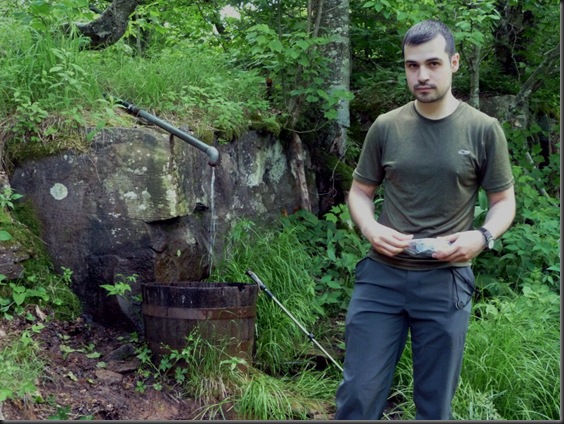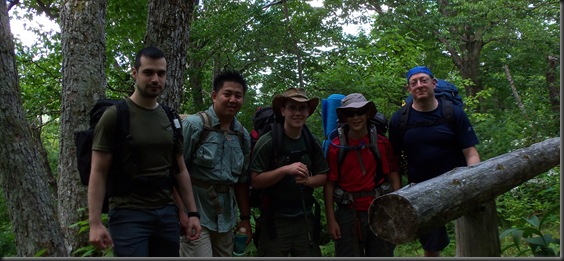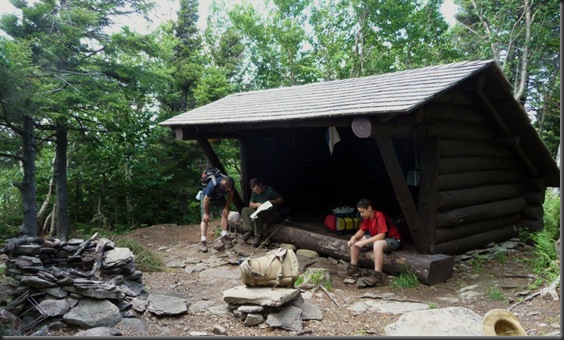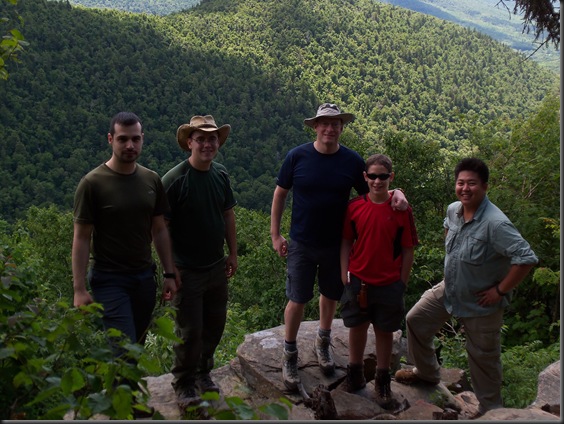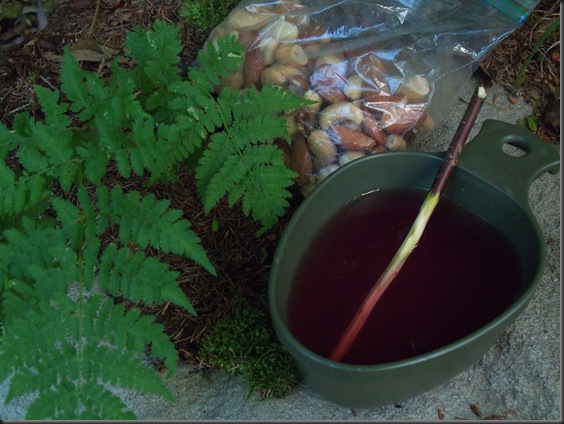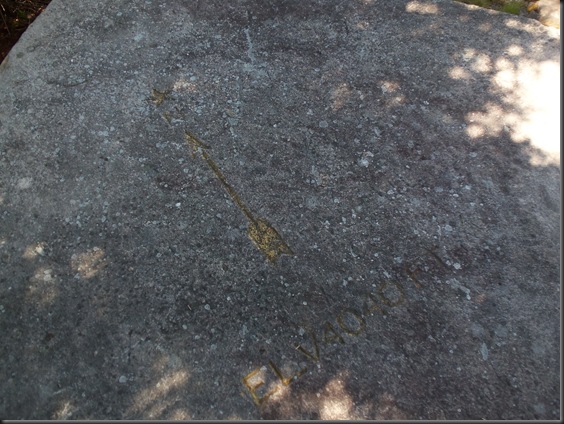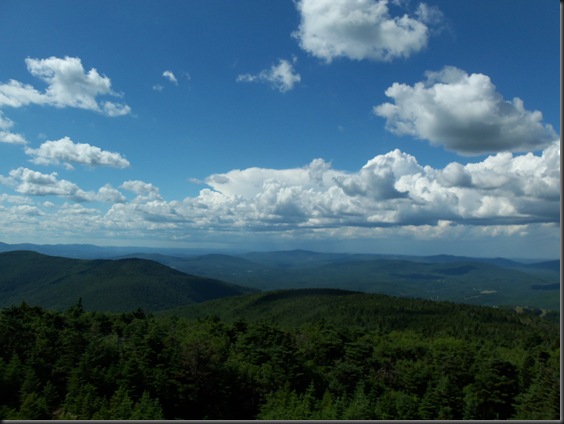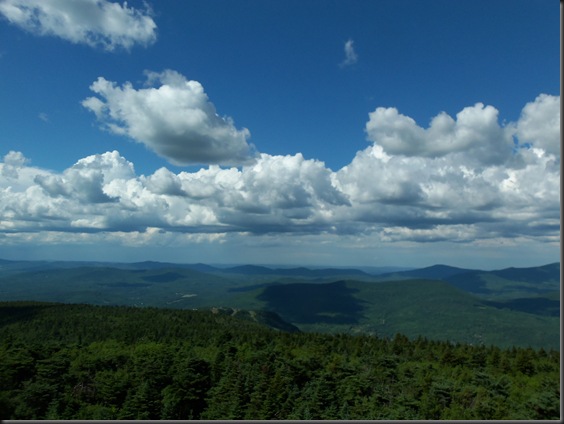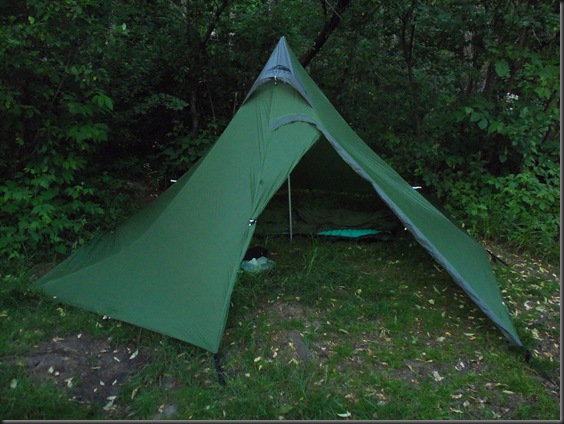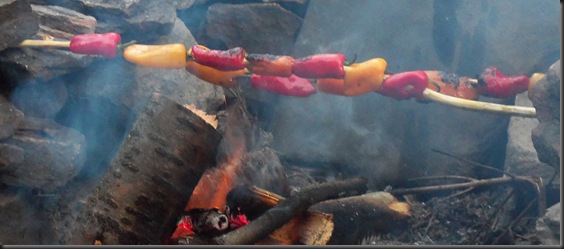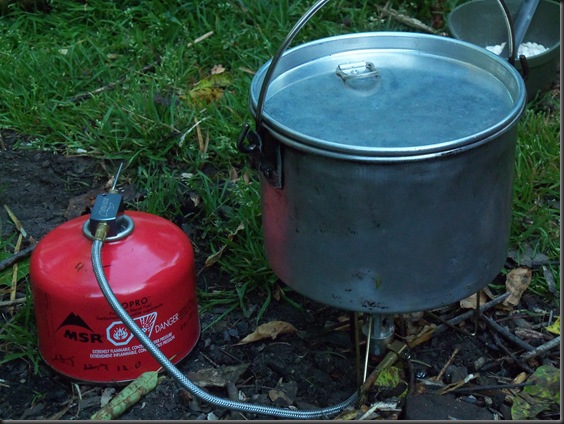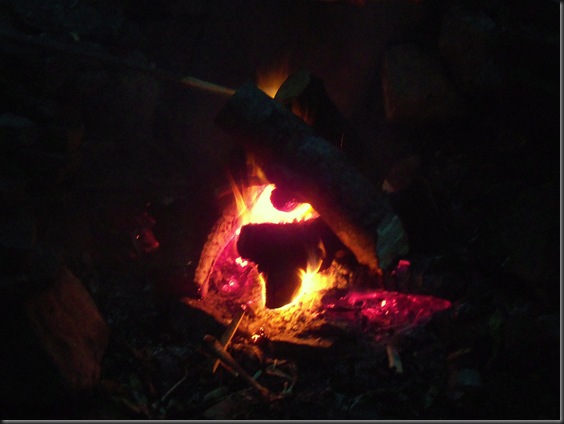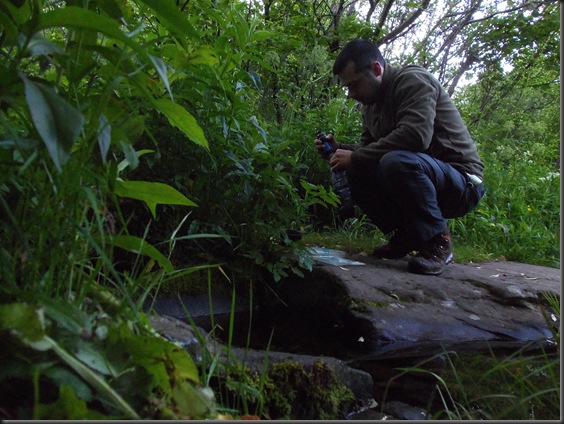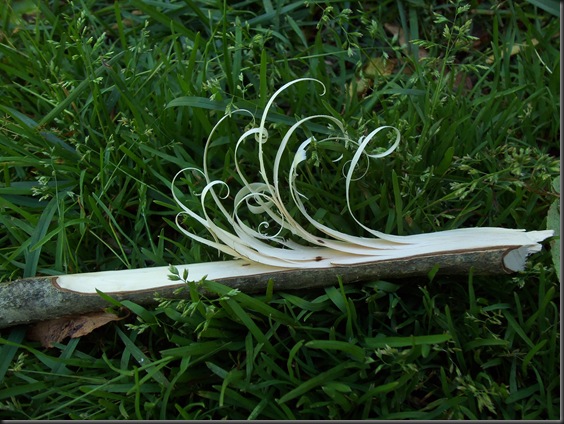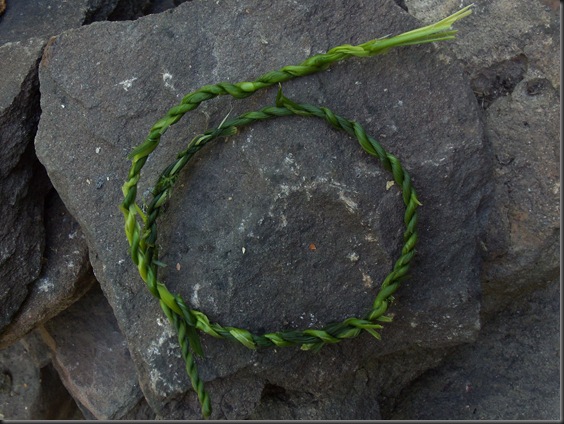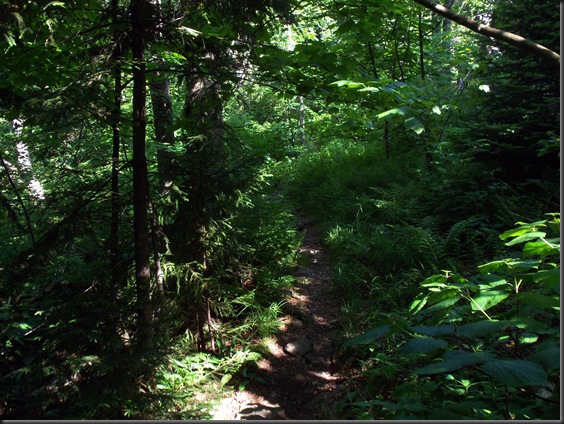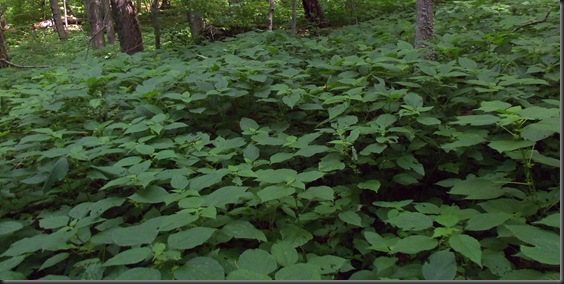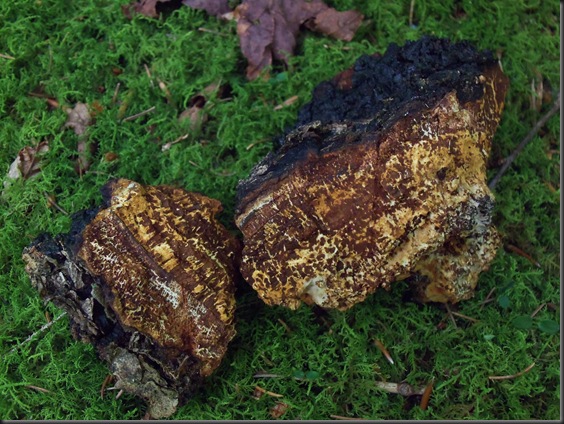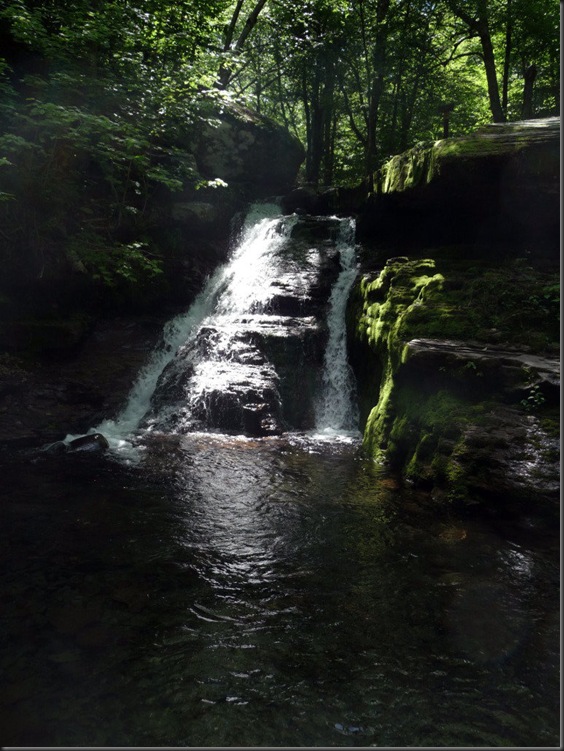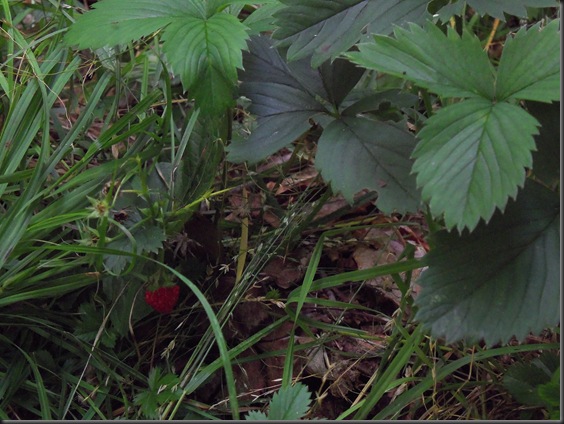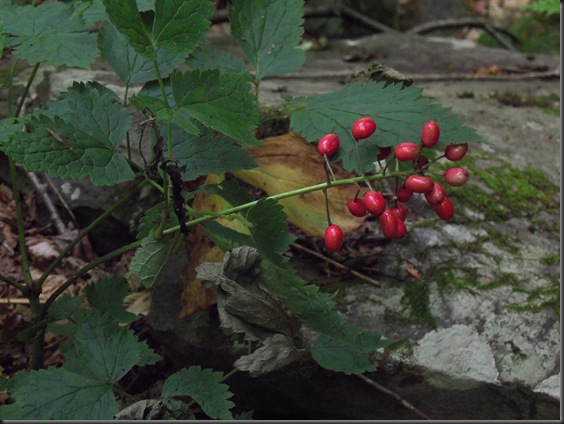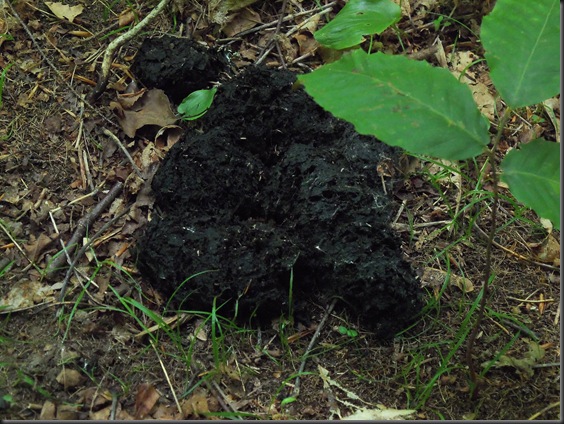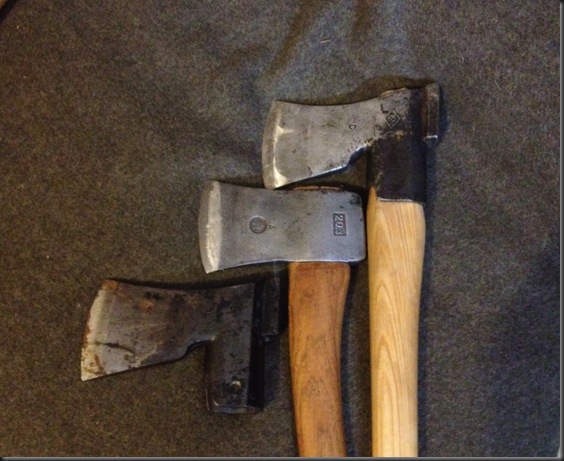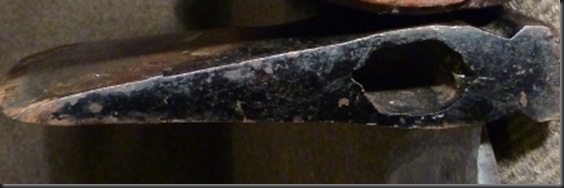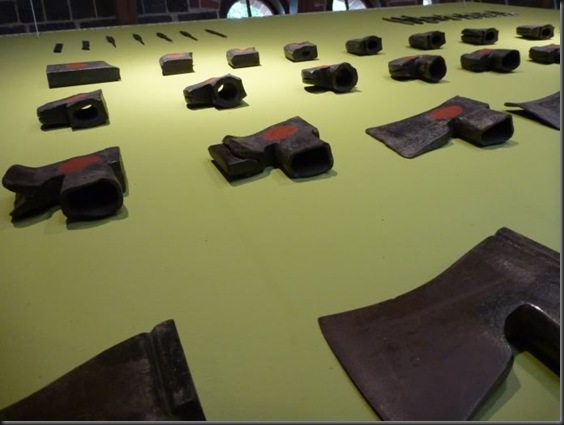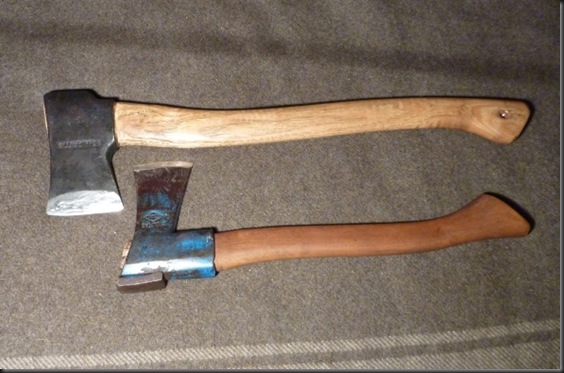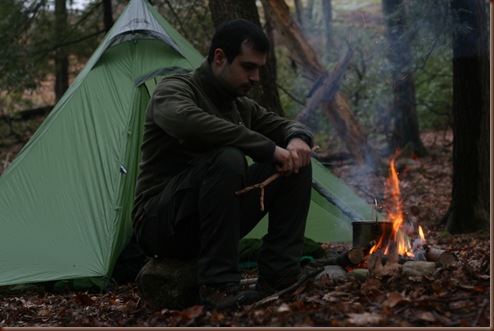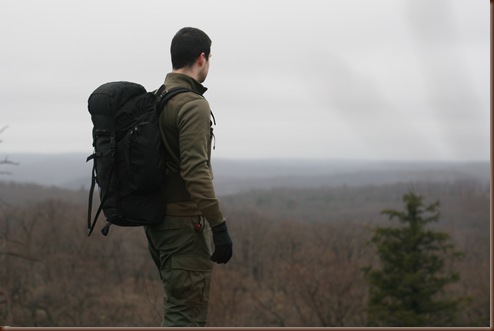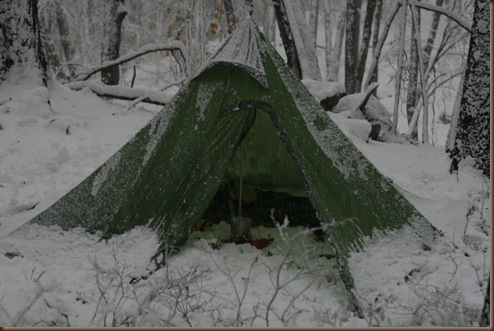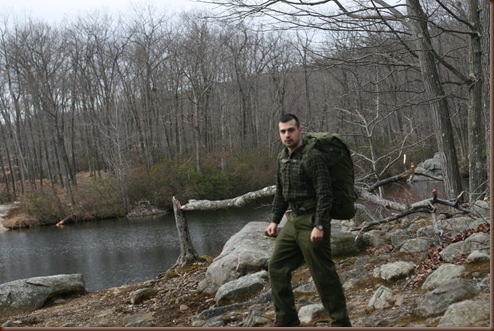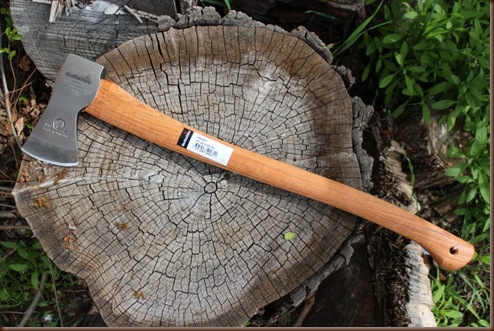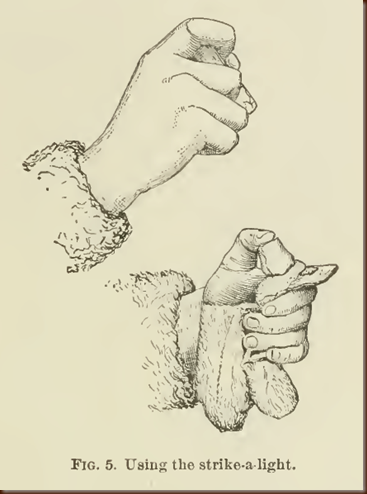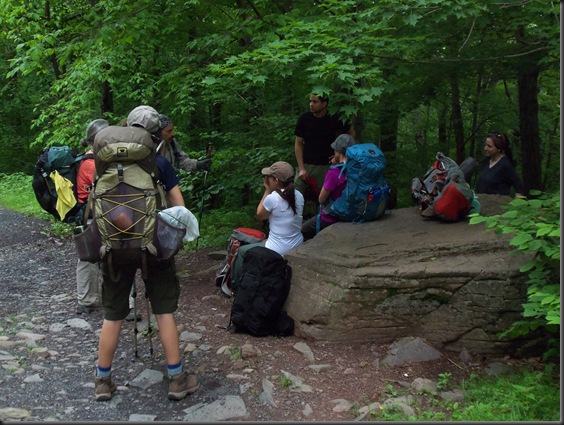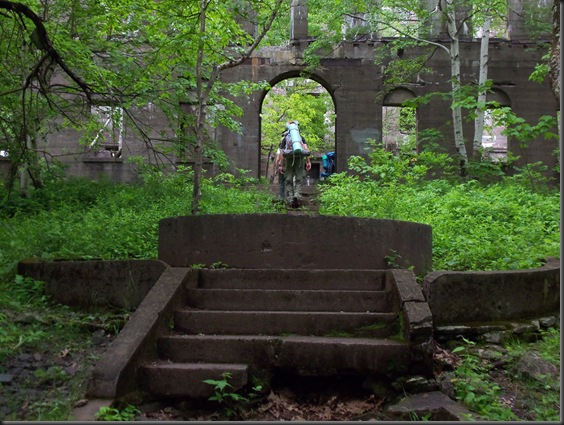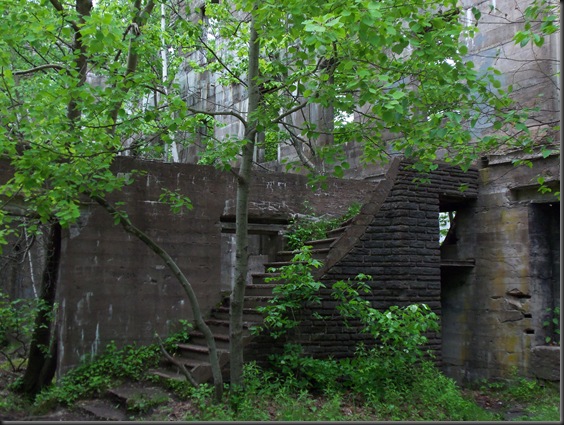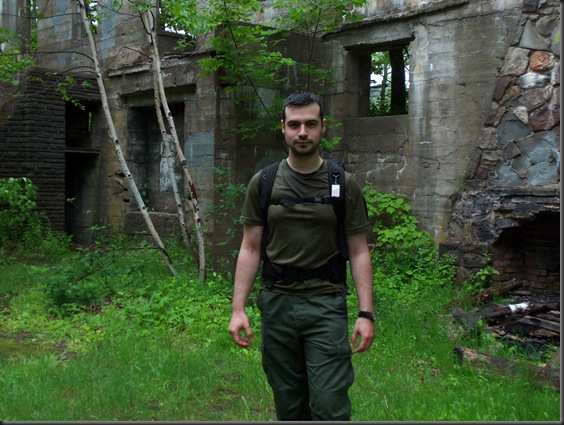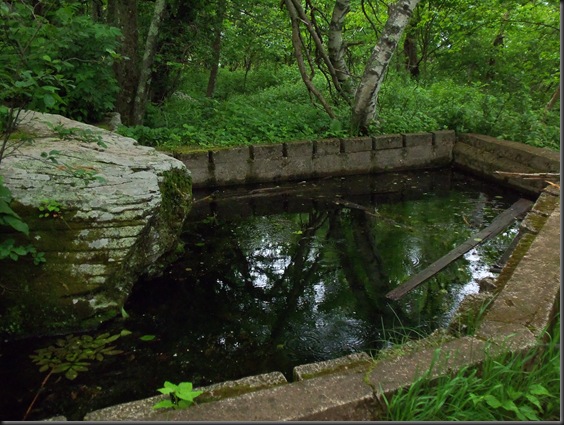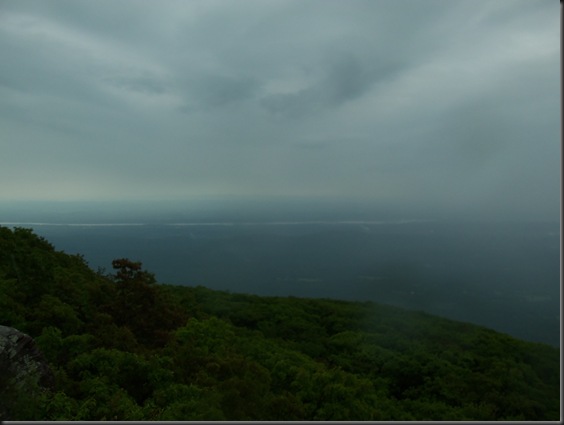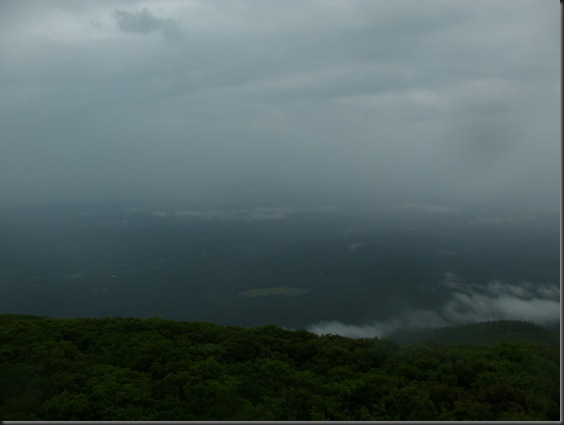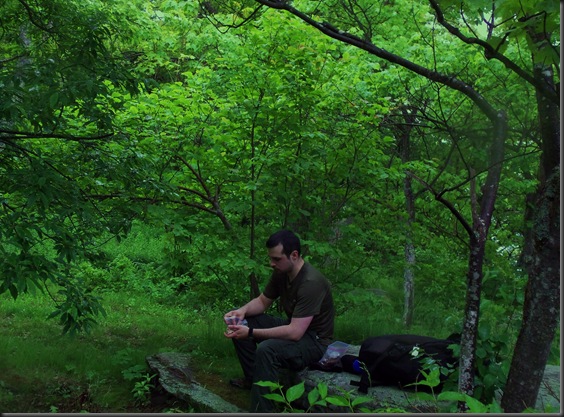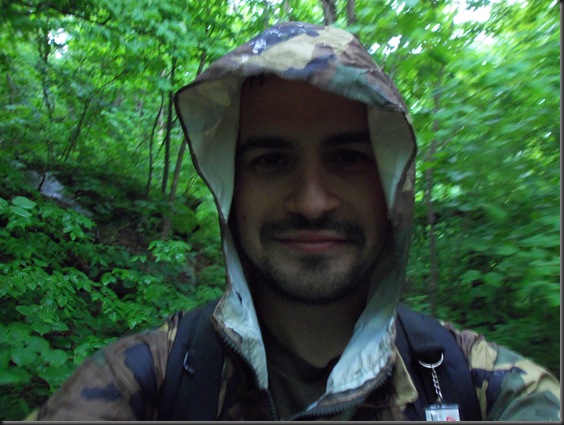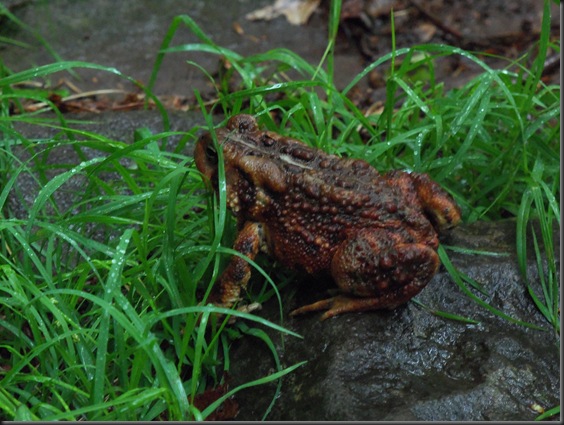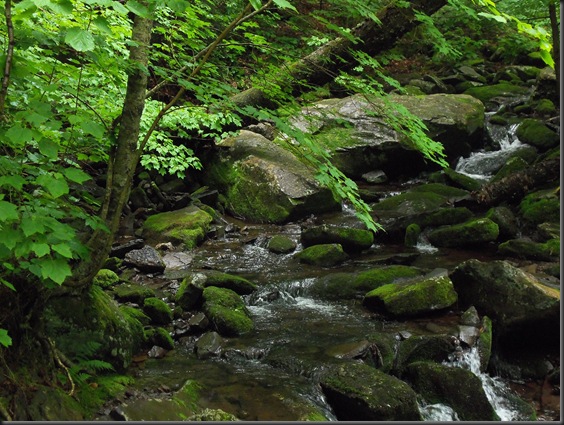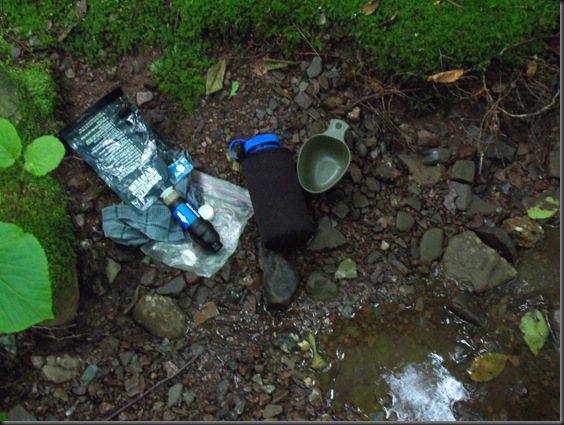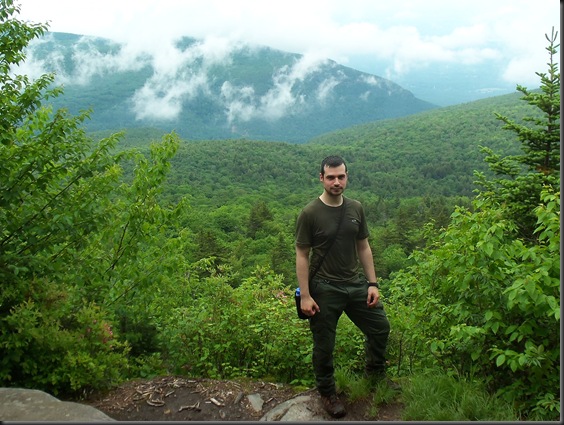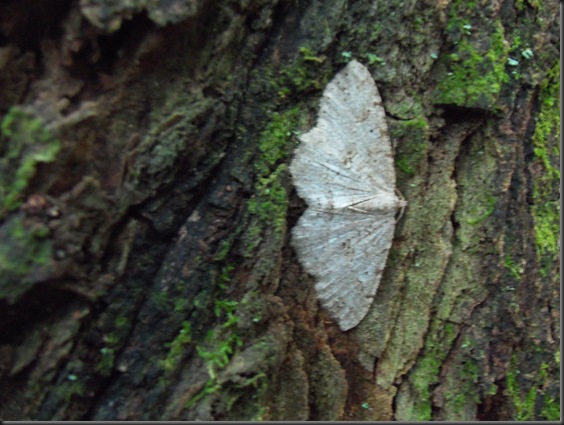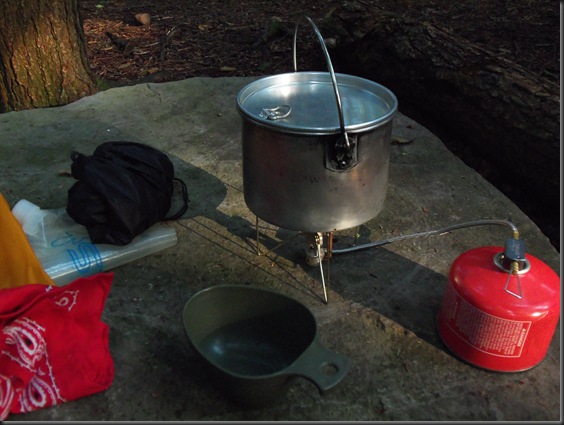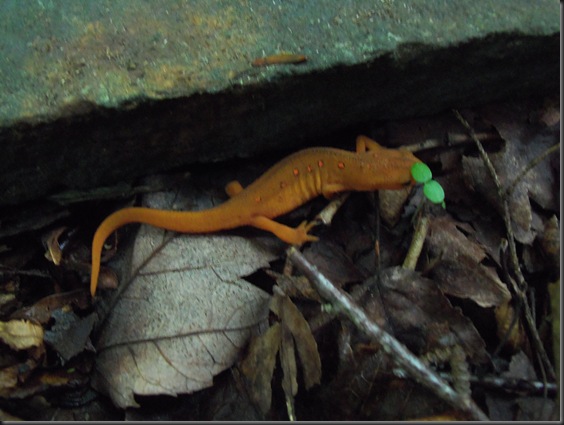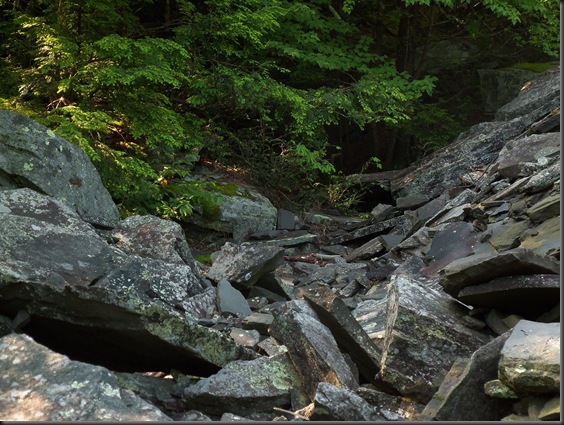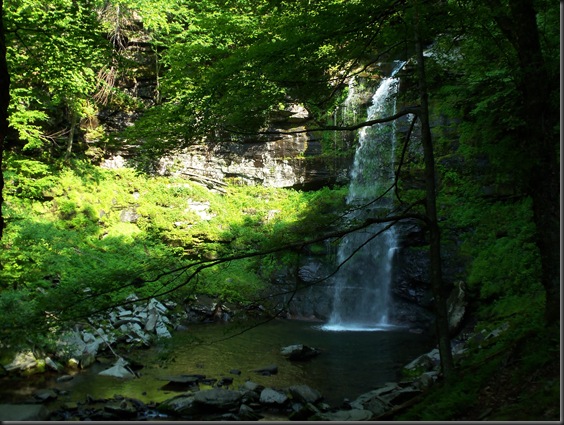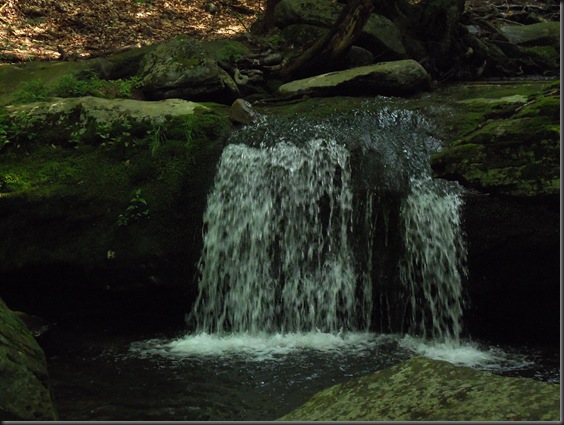This past weekend was the first New York Blades and Bushcraft meeting. For those of you who are not familiar, Blades and Bushcraft is an online forum that focuses on, you guessed it, blades and bushcraft. :) It has separate sub-boards for different locations, including New York. Using the board, some of us organized this trip.
There ended up being five of us. Here I will be using their forum names. There was Zig, mibuwulf, beanbag, Son O’ (beanbag), and me, Wood Trekker. The outing was in the Catskills, specifically, the Hunter Mountain loop. The plan was to start out on the trail at 10AM, travel about four miles to the summit of Hunter Mountain at 4040 ft. and then go down another mile to an elevation below 3500 ft. where we could set up camp for the night. The following day it would be another three miles to our starting point… In the picture below, you can see Zig and mibuwulf arriving two hours late…
No worries, though, we had plenty of time. Even going slowly at one mile per hour, we would reach our destination with plenty of time to spare. So, we set off on the trail.
After few miles, we stopped by a water source to fill up. It was a spring that had been lead to a convenient location with some pipe. Even though it was spring water, we decided to play it safe and filter it. In the picture below you see the water source, and me trying to take my Sawyer Squeeze Filter out of the Ziploc bag.
In fact, between the five of us, we had four different filters. Zig had a MSR gravity filter, mibuwulf had a Platypus gravity filter, beanbag and Son O’ had an MSR Miniworks EX, and I had my Sawyer. The results… thanks to Son O’s furious pumping action, he had filled up first. Zig had some flow issues with his filter, so we all had a nice rest. And of course, some photo opportunities.
From left to right above, Wood Trekker (me), mibuwulf, Zig, Son O’, and beanbag.
If you are wondering, the reason why mibuwulf’s backpack is so hard to see, it’s because he was using what can only be described as a day pack. We all eagerly anticipated getting to camp and seeing what type of voodoo he used to get all his gear in there.
After another mile or so, we stopped for lunch. For the location we chose a leanto site off the trail. For those of you who may not be familiar with the area, in many forests, in specific locations there are set up shelter or leanto sites. The one you see in the picture is very typical of these shelters, although newer than most. Some people like to use them instead of carrying a tent, or go to them in case of an emergency. This particular leanto was located exactly at 3500 ft, the highest elevation where you are allowed to camp overnight in the Catskills.
What made this site particularly nice was plenty of space, and the view from one of the cliffs to the side.
Of course we couldn’t resist the opportunity for another group photo.
I kept lunch simple; just a granola bar, some mixed nuts, and a powdered drink mix.
After me ate, we set off on the trail again, and after another mole or so, we reached the summit of Hunter Mountain. The marker indicated that we were at 4040 ft.
The state maintains a fire tower on some of these peaks, and there was one here as well. Some climbing allowed for a great view of the area.
From there it was another mile downhill until we reached a lower elevation of 3500 ft. The location was marked with another leanto similar to the one you saw above. We had planned on camping in that area after finding a suitable location. Unfortunately, it turned out that the terrain was not conducive to a camp site. Even though we searched for quite some time, we could not find any flat areas large enough to accommodate five people. We decided to set up camp close to the leanto itself. I generally do not like to do that, but we did not have much of a choice. As always, I had my Shangri-La 5 with me.
Beanbag and Son O’ had a two man REI tent that they were trying out for the first time, and seemed to work out pretty well. Zig and mibuwulf pulled out their hammocks, and set up nearby.
There was a fire pit set up close to the leanto, and we quickly made use of it to roast up some peppers that Zig had brought. There was plenty of birch in the area, which made for a quick, although smoky fire. The fact that it had rained the day before, did not help with the smoke.
For dinner, we all cooked what we had brought, and shared some hotdogs that beanbag had carried. I made my usual mashed potatoes with dehydrated ground beef. I’m still using the modified Kovea Camp 5. Ordinarily, when there is a fire going I would use it to cook and save the stove fuel, but there were too many of us for me to occupy the fire pit. It wasn’t well structured for group cooking.
Beanbag and Son O’ used a MSR Pocket Rocket for cooking, Zig, used a wood gas stove, and mebuwulf used a can of ravioli that he heated up on the fire, in part explaining the small size of his pack.
We kept the fire going and killed couple of hours talking about gear and other random topics.
After that, we called it a night. It turned out to be colder than we expected. The rain the pervious day had really brought down the temperatures. During the night it got into the low 50s.
I got up before the rest of the group, so I took the opportunity to filter some water from a nearby stream.
When I got back people had started waking up, so we all made some breakfast. As usual, I made some oatmeal.
When we were done with breakfast, we realized with great horror that we had not cooked any bacon by hanging it from a stick the whole trip, and we started to fear that it would be disqualified as a bushcraft outing. To remedy the situation, we quickly set off making some feather sticks to the shouts of “Bushcraft! Bushcraft!”. Here is my contribution to the cause.
Mibuwulf took the opportunity to teach us how to pick up the ladies by making a flower from a stick.
To keep it safe, I also decided to whip up some cordage from grass that I found in the area which seemed suited for the task.
When we felt secure that we had met the bushcraft quota for the trip, we packed up and started down the mountain. I had been recording the trip on my GPS, but I forgot to turn it on. I remembered a bit later, but you will notice the lack of record for this section of the trip in the GPS image further down.
The way down followed a section of Devil’s path. It is generally a very hard trail, but this portion was not too bad.
There were stinging and wood nettles (later distinguished by Zig) everywhere. Son O’ got it pretty bad, although it didn’t seem to slow him down.
I spotted some chaga on a birch tree off to the side of the trail. We stopped to collect some of it.
We divided it up. Incidentally, this is when I remembered to turn the GPS back on.
Further down, the trail started following a river, which lead us to a small waterfall.
We decided to stop there for lunch. Some of our more adventurous members, Zig, beanbag and Son O’, decided to go for a swim. I stayed up on the rocks.
Mibuwulf joined me. He in turn was joined by a butterfly which insisted on staying on his shoulder.
We finished lunch, dried off, and kept going. On our way, I spotted some strawberries. There was even an actual strawberry on one of the plants. Zig took care of it.
There were also some other berries we couldn’t identify.
Not surprisingly, not too far from the area, a bit further into the woods, there was a pile of bear scat.
We kept following the river almost all the way out. Soon we were back at our starting point. The trip had been about eight miles in length, with about 2000 ft increase in elevation. Below you can see the tracks recorded by the GPS. You will notice that for one of the section there is a straight line. That is the part where I forgot to turn on the unit. The red line I have added approximates the actual route that we took. The arrow on the left tip of the track was our starting point.
You can also see the elevation profile. It wasn’t anything too extreme, but made for a fun, challenging trip.
I can’t say enough about how great all these guys were. Everyone got along great, and we all seemed to enjoy a similar approach to the woods. Usually I like to keep to myself whenever I go out, but I would go into the woods with these guys anytime. I look forward to the next trip, which will hopefully be soon. Lastly, please check out the Blades and Bushcraft forum. It is a great place for like mined people.

